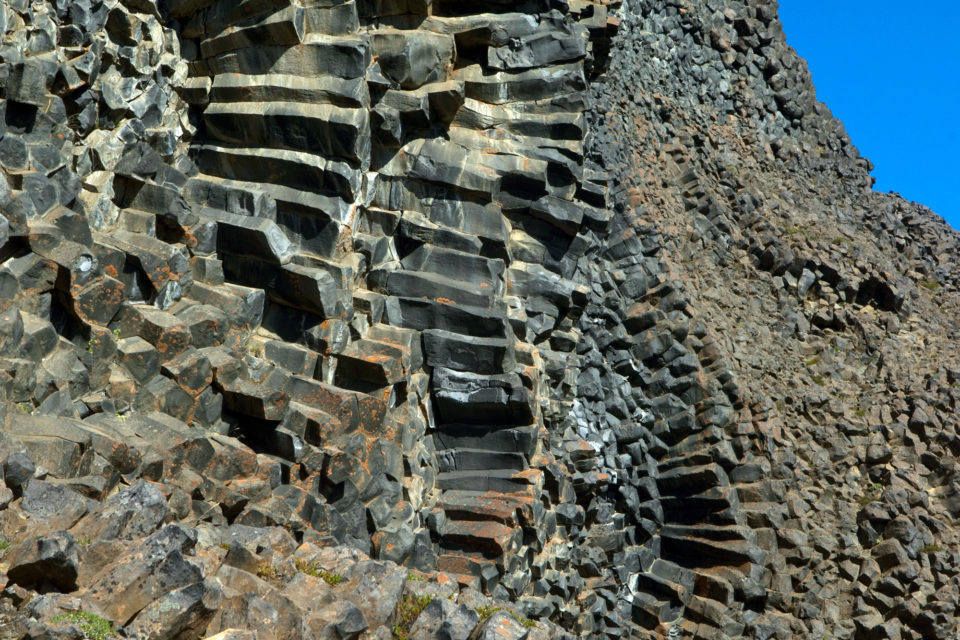
Along the magnificent valley of Vesturdalur, in between Ásbyrgi and Dettifoss, the highlights you must not miss are the bizarre basalt rocks at Hljóðaklettar. A series of vertical, horizontal and diagonal columns, formed by mysterious volcanic activity, standing over the ground and modeling rosettes, swirls, spirals and honeycombs, in turn give life to enormous and puzzling rock formations of distinctive shape. Taking the circular trail from the parking site and skirting the Jökulsá á Fjöllum you would run into all the most famous ones.
Hljoðaklettar could be translated loosely as the ´Whispering Rock´. It´s the most famous in a series of amorphous basalt rock formations along the Jökulsa Canyon floor, noted for its large pitted indentation with unique acoustic qualities.
The area offers short and long hiking tours ranging from a few minutes to several hours. Check out the official hiking map to learn more.
Kastali, Tröllið, Kirkjan
First is Kastali, the Castle, on the opposite bank of the river with its two main impressive outcrops looking as a stronghold, the greatest, and as a turret, the smallest. The next one you find is Tröllið, the Giant, only few steps forward, maybe guarding the Castle.
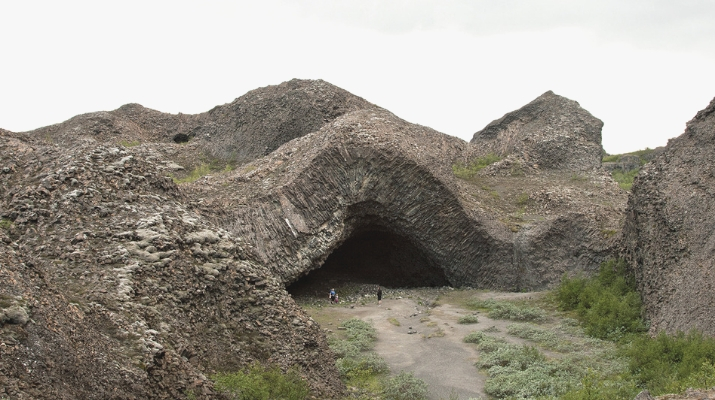
Some hundred meters after Tröllið the path turns away from the river. In a few minutes you reach Kirkjan, the Church. Don’t expect any bell towers or gothic facade. Here you’ll simply find an almost perfectly symmetric arch as an entrance to an amazing cave that will make you ponder on how beautiful mother nature’s works can be, and in which you’ll be able to test your singing skills. Kirkjan, with the unique acoustic qualities of basaltic rocks, is the perfect location.
Besides these rock formations, Hljóðaklettar is plenty of more. Let your imagination run wild here and go beyond. Vesturdalur is not Hljóðaklettar only, though: Rauðhólar and its colorful craters, the two petrified trolls Karl and Kerling and their cave Tröllahellir and the lonely Eyjan shouldn’t be missed as well.
Rauðhólar, Karl & Kerling
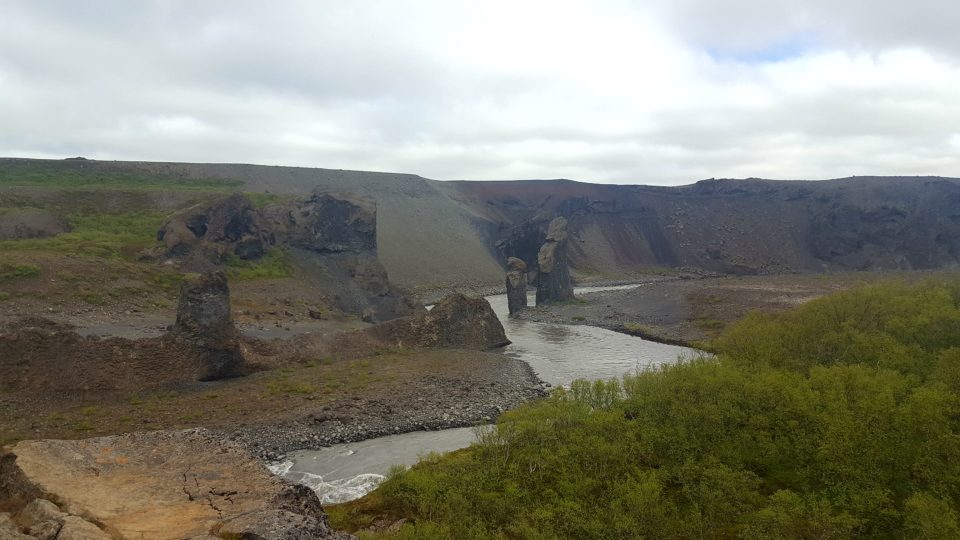
The Jökulsa Canyon is often hailed as one of the most beautiful hiking areas in Iceland. This huge, hulky mass with its craggy honeycombed surface is a definite highlight – but this stop on the canyon route offers access to several other geological anomalies, which all together form a much overlooked highlight of the North. A little further past Hljoðaklettar you can find Rauðhollar, a striking, vivid red and volcanic black hillside. Or on the opposite side, walking south, you can see a series of unusual features, including a couple of petrified trolls, named Karl and Kerling (Man and Woman).
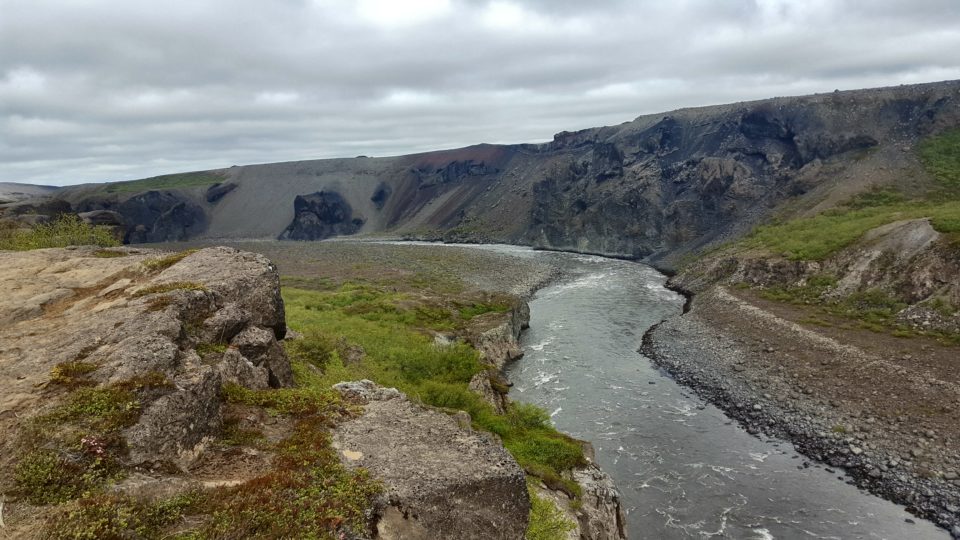
Services
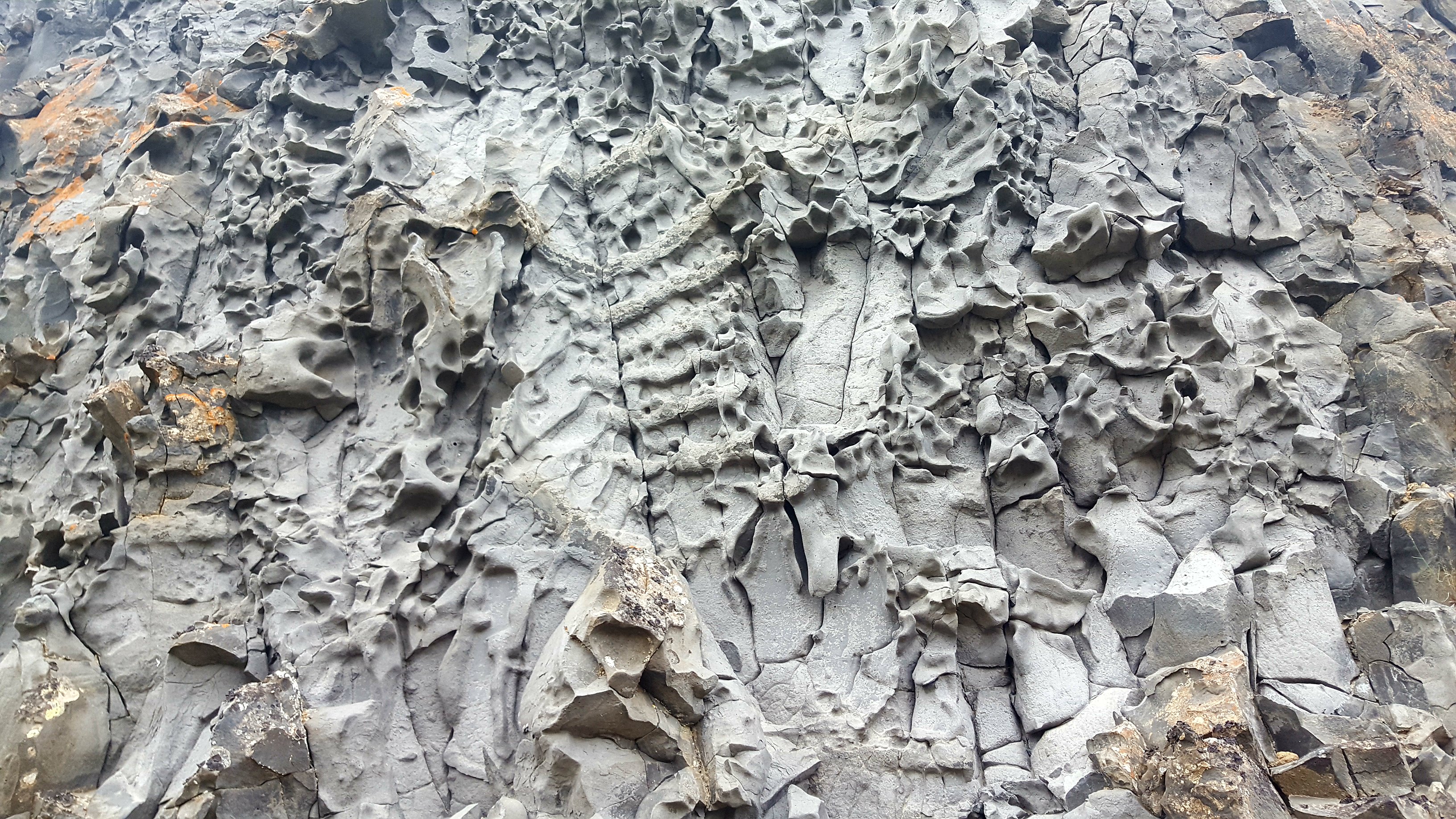
There is a small tourist information office, car park and campsite in this area of the national park. The campsite next to Hljöðaklettar is called Vesturdalur. More information can be obtained from the visitors center in Ásbyrgi.
The entire area is part of the Vatnajökull National Park and has been approved as UNESCO world heritage site in 2019.
Links
Camping in Vesturdalur
Vesturdalur Hiking Maps
Getting There
Take the northern road from Húsavík, following it around the coast towards Ásbyrgi /Kopasker. Before you reach Ásbyrgi itself, there is a right hand turn, on the road 862.
Also accessible from the south, the 862 has a section of tarmacked road until Dettifoss, but the approach to Hljoðaklettar is a gravel track on either side. Though it should be absolutely fine for a 2WD rental car (with suitable insurance), it can sometimes be partly blocked off due to snow or ice in spring or autumn. So always check on www.road.is on the day of your travel.